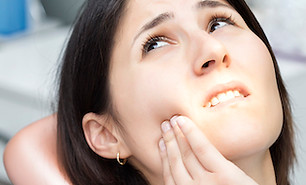
PREVENTATIVE DENTISTRY.
Preventive dentistry emphasizes the importance of ongoing hygiene procedures and daily practices to prevent tooth decay and other dental diseases and conditions through consistent practices such as brushing and flossing. TheAmerican Dental Association (ADA) recommends a minimum of two dental checkups each year for professional cleaning and management of any developing conditions.
Brushing

Brushing Checklist:
- Brush at 45 degree angle
-
Brush away from gums
-
Brush twice a day
-
Use fluoride toothpaste
It is well known that brushing your teeth 2 times a day with a flouride toothpaste is generally accepted as the foundation to healthier teeth and gums to avoid teeth problems in the future. This practice removes the debris from your teeth and gums, aiding in cavity and gum disease prevention.
Dental Cleaning

Dental Cleaning Checklist:
-
Polishing your teeth
-
Flossing between your teeth
-
Reviewing recommended brushing and flossing techniques
-
Checking the cleanliness of your teeth and gums
-
Removing any plaque and tartar
Have you ever wondered why the American Dental Association recommend you come back every six months? It’s because regular dental visits are essential for the maintenance of healthy teeth and gums. And in between those examinations, it’s important that you work to keep your teeth and gums clean and healthy. If you need additional help, your dentist may even suggest more frequent visits.
Flossing

Flossing Checklist:
-
Never force the floss
-
Use a clean section of floss on each tooth
-
Rinse when complete with water or mouthwash
-
Floss at lease once per day
-
Gently slide the floss between each tooth moving up and down around the gum line
Flossing is the process of using a thin synthetic dental tape to reach and remove debris and bacteria that are in areas that your toothbrush can't easily affect, and it increases circulation in your gums. Many dentists believe flossing is the best weapon to prevent and reduce the build up of plaque. A good brushing and flossing routine will help prevent cavities, periodontal disease, and other dental problems.
Mouth | Oral Rinse

Possible Ingredients:
-
Chlorhexidin
-
Essential oils
-
Cetylpyridinium Chloride (CPC)
-
Povidone iodine
Studies have shown that oral rinses can reduce more plaque and more signs of gingivitis when used in addition to tooth brushing compared with tooth brushing alone. Whatever oral rinse you choose, be sure to follow the instructions and avoid swallowing. Oral rinses may contain a variety of ingredients to battle bacteria in the mouth.
Bad Breath

Causes of Bad Breath:
-
Respiratory tract infections - Throat infections, sinus infections, lung infections
-
External agents such as garlic, onions, coffee, cigarette smoking, chewing tobacco
-
Dry mouth (xerostomia)
-
Poor dental hygiene - improper or infrequent brushing and flossing can leave food particles to decay inside the mouth
-
Infections in the mouth - Periodontal (gum) disease
Bad breath, also known as halitosis, is breath that has an unpleasant odor. This odor can strike periodically or be persistent, depending on the cause. In many people, the millions of bacteria that live in the mouth (particularly on the back of the tongue) are the primary causes of bad breath. The mouth's warm, moist conditions make an ideal environment for these bacteria to grow. Most bad breath is caused by something in the mouth.
Sensitive Teeth

Causes of Tooth Sensitivity:
-
Brushing with a very abrasive toothpaste, brushing incorrectly and/or brushing more than three times a day could result in a loss of enamel
-
Gum disease, which can result in gum recession
-
Gum recession due to age or improper tooth brushing
-
Acidic beverges (such as soda) can cause enamel erosion and dentine exposure
-
Tooth grinding - this may actually cause most of teeth to feel sensitive
Tooth sensitivity is something that affects a number of people. It is often caused by eating or drinking something hot, cold, sweet or acidic. Under normal conditions, the underlying dentin of the tooth (the layer that immediately surrounds the nerve) is covered by the enamel in the tooth crown, and the gums that surround the tooth. Over time, the enamel covering can get thinner, thus providing less protection. The gums can also recede over time, exposing the underlying root surface dentin.
